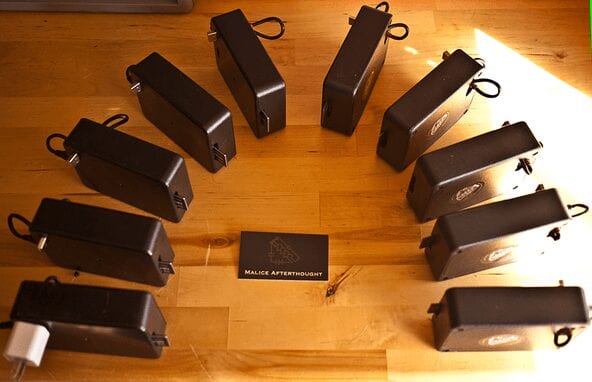
Schools and universities are embracing technology that tailors content to students’ abilities and takes teachers out of the lecturing business. But is it an improvement?
When Arnecia Hawkins enrolled at Arizona State University last fall, she did not realize she was volunteering as a test subject in an experimental reinvention of American higher education. Yet here she was, near the end of her spring semester, learning math from a machine. In a well-appointed computer lab in Tempe, on Arizona State’s desert resort of a campus, she and a sophomore named Jessica were practicing calculating annuities. Through a software dashboard, they could click and scroll among videos, text, quizzes and practice problems at their own pace. As they worked, their answers, along with reams of data on the ways in which they arrived at those answers, were beamed to distant servers. Predictive algorithms developed by a team of data scientists compared their stats with data gathered from tens of thousands of other students, looking for clues as to what Hawkins was learning, what she was struggling with, what she should learn next and how, exactly, she should learn it.
Having a computer for an instructor was a change for Hawkins. “I’m not gonna lie—at first I was really annoyed with it,” she says. The arrangement was a switch for her professor, too. David Heckman, a mathematician, was accustomed to lecturing to the class, but he had to take on the role of a roving mentor, responding to raised hands and coaching students when they got stumped. Soon, though, both began to see some benefits. Hawkins liked the self-pacing, which allowed her to work ahead on her own time, either from her laptop or from the computer lab. For Heckman, the program allowed him to more easily track his students’ performance. He could open a dashboard that told him, in granular detail, how each student was doing—not only who was on track and who was not but who was working on any given concept. Heckman says he likes lecturing better, but he seems to be adjusting. One definite perk for instuctors: the software does most of the grading for them.
At the end of the term, Hawkins will have completed the last college math class she will probably ever have to take. She will think back on this data-driven course model—so new and controversial right now—as the “normal” college experience. “Do we even have regular math classes here?” she asks.
Big Data Takes Education
Arizona State’s decision to move to computerized learning was born, at least in part, of necessity.
The Latest Bing News on:
Big Data Teaching
- 80 kindergartners, 5 adults: Could a new teaching model come to Michigan schools?on April 27, 2024 at 2:27 pm
A handful of Michigan superintendents visited Arizona this year in hopes of adapting a new teaching model to attract and retain teachers.
- Transitioning Out of Teaching Is Hard. Here’s What I’ve Learnedon April 26, 2024 at 8:46 am
For teachers looking to change careers, the skills they’ve honed in the classroom don’t always easily translate to their resume.
- Merriam police hold class teaching women self defenseon April 25, 2024 at 7:42 pm
The Merriam Police Department held a free class for women Thursday, teaching them self-defense skills at a Situational Awareness Workshop.
- Burks earns UMMAA Teaching Awardon April 24, 2024 at 8:48 am
University of Minnesota Morris professor of economics Steve Burks has earned the 2024 University of Minnesota Morris Alumni Association Teaching Award. This award honors individual faculty members for ...
- Data, Desire, and Where Fiction Goes Nexton April 23, 2024 at 10:00 pm
Q&A / The Nation speaks to Jessi Jezewska Stevens about her new short-story collection, which dramatizes late-capitalist living. Rose D’Amora Jessi Jezewska Stevens’s fiction wryly examines the ...
- MC to give teaching excellence awardson April 23, 2024 at 8:46 am
Midland College has announced nominees for the 2023 — 2024 Dr. Stan Jacobs Teaching Excellence Awards and ceremony details. The Teaching Excellence Awards are a long-standing tradition to recognize, ...
- Foundations give big boosts to some Knox County schools, but others are left behindon April 23, 2024 at 5:47 am
The schools that don’t have nonprofit foundations aren't totally on their own. They receive financial support from the Knox Ed Foundation and the United Way's Community Schools program. But these ...
- Here’s How Data Can Help Unlock Education Equityon April 22, 2024 at 11:20 am
TC’s Renzhe Yu, Alex Bowers, and Youmi Suk break down their ongoing, different approaches to the same goal: high quality education for all ...
- Big data boosts wearable tech: New study enhances physical activity trackingon April 21, 2024 at 7:10 pm
Researchers utilized a large-scale unlabeled dataset from the U.K. Biobank to train deep-learning models for accurately monitoring physical activity through wearables, demonstrating enhanced accuracy ...
- Big Tech can’t hoard brainwave data for ad targeting, Colorado law sayson April 18, 2024 at 11:03 am
Colorado's law requires tech companies to gain consent to collect neural data and to be more transparent about how such data is used. Additionally, it must be easy for people to access, delete, or ...
The Latest Google Headlines on:
Big Data Teaching
[google_news title=”” keyword=”Big Data Teaching” num_posts=”10″ blurb_length=”0″ show_thumb=”left”]
The Latest Bing News on:
Learning math from a machine
- In the AI Economy, There Will Be Zero Percent Unemploymenton April 28, 2024 at 7:00 am
AI developer Andrew Mayne explains why technology could create more jobs and lead to unprecedented economic growth.
- Innovation Meets Creativityon April 27, 2024 at 1:37 pm
Artificial intelligence, robots, glass blowing, virtual reality, and performing arts were just a sampling of what thousands of visitors experienced at the 2024 Imagine RIT: Creativity and Innovation ...
- ‘NEETs’ slow the German machineon April 26, 2024 at 8:49 pm
After coming up short in an international educational assessment, the country will invest in books and 4,000 schools for students facing challenges. While 71% of young people were in the middle class ...
- Learn about QC innovators and inventors in new exhibiton April 26, 2024 at 3:43 pm
You may have known that chiropractic care, sliced bread and Dairy Queen were all invented in the Quad Cities, but did you know that Deere & Company was very briefly in the automobile business? That’s ...
- 'If you can make learning fun, it sticks': Students compete in Contrapt Competitionon April 26, 2024 at 1:06 pm
Students from local schools participated in the Greater Waukesha Contrapt Competition on Friday, April 26.The competition consists of teams of students designing and buil ...
- Machine learning and experimenton April 25, 2024 at 5:31 am
For more than 20 years in experimental particle physics and astrophysics, machine learning has been accelerating the pace of science, helping scientists tackle problems of greater and greater ...
- AI Chatbots Need Large Language Models. Here's What to Know About LLMson April 24, 2024 at 4:01 pm
Well, LLMs use neural networks, which are machine learning models that take an input and perform mathematical calculations to produce an output. The number of variables in these computations are ...
- T-Hub Supported MATH is Launching AI Career Finder to Create AI Jobson April 24, 2024 at 5:06 am
Called AI Career Finder, the platform is designed to serve as a central hub for connecting startups seeking top AI/ML professionals with candidates searching for exciting opportunities in the field.
- Here's how I'd broadly frame the environment that led to my firing as a teacheron April 23, 2024 at 2:30 pm
Public education is a groundbreaking gift that America invented. The students I got to teach still paid for it in places like Ecuador, Peru and Honduras. When I asked an immigrant student once, over ...
- RPA, Machine Learning, AI: What's the Difference and How to Combine?on April 22, 2024 at 12:26 am
The current strong digital transformation has brought businesses closer to concepts such as AI, RPA and Machine Learnin ...
The Latest Google Headlines on:
Learning math from a machine
[google_news title=”” keyword=”learning math from a machine” num_posts=”10″ blurb_length=”0″ show_thumb=”left”]










